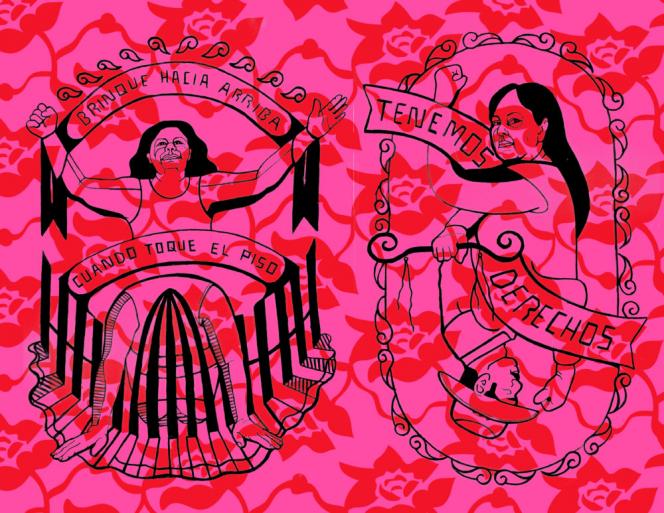Nansi Guevara, a visual artist and activist based in South Texas, has been creating art for as long as she can remember. “The circumstances in my household, a crafty and costurera mother and a father that left construction materials all over the house, pushed me to utilize these discarded materials for new objects that nurtured my imagination.” She points out that what is now called “DIY” has always been a marker of creativity, and a form of art, rooted in indigeneity, that goes back centuries. It is rasquachismo for border communities—a term coined by Tomás Ybarra-Frausto referring to the celebration of resourcefulness, ingenuity, and “the underdog” in Chicano/a arts. As a self-described Xicana, Mexicana, first generation U.S. American, artist, and muxerista, Nansi uses art to make sense of her and her community’s experiences and evoke emotion and empathy through imagery.
Growing up on the border in Laredo, Texas, exposed her to complex, often contradictory realities. “Since I was a child I couldn’t understand why some people were allowed to cross the [US.-Mexico International] bridge and some were not.” Nansi evokes Chicana feminist theorist Gloria Anzaldua’s concept of nepantla, or “the in-betweenness that we experience as border people,” as the foundation for the sacred knowledge of fronterizas.
Inspired by the queer/women leadership of Black Lives Matter, the dignity and humanity of the Zapatista communities, the indigenous-led movement against the Dakota Access Pipeline in Standing Rock, North Dakota, and other bottom-up, community driven movements for change, Nansi says, “For me it is critical to center the often untold stories, histories, and experiences of people of color and women in this country.” Her art frequently incorporates bright colors, resisting Eurocentric design traditions, and weaves together multiple languages, as in her installation, “Our Tierra Livri.” She says she uses language in her art to “elevate multilingualism and push back against purism and nationalism in language,” which delegitimizes folks for “not speaking in a certain way or not using the ‘right’ language.”
Nansi describes the process of drawing as a medicine to her body and sees the creation of new worlds through art as something that’s also essential to activism. Socially conscious artists are at the forefront of movements and change, pushing boundaries and bringing the seemingly invisible to light. They “are the pulse of the community and art has the power to help us imagine a better world. It is essential in our fight for justice because we need to be able to first imagine change in our minds in order to create it.”

